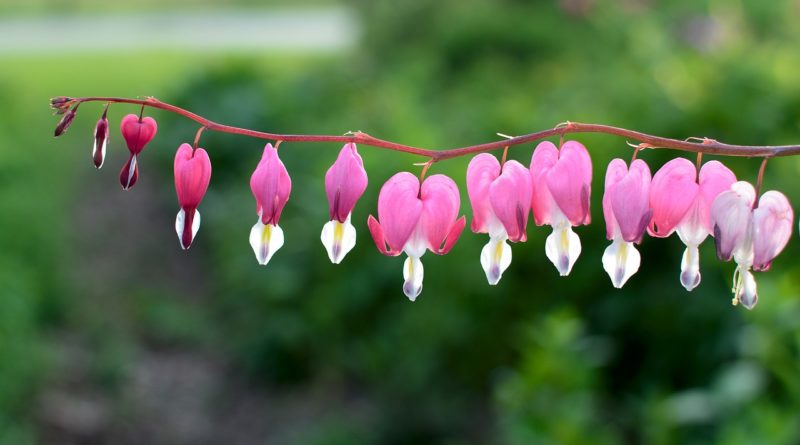How to Create Hanging Garden and Which Plants to Use
Making a hanging garden in your home is a fresh and innovative idea which can make your home stand out. There are many different ways of making one, and it depends only on what you like and what suits your home best. You can choose between different sizes, shapes, designs, plants, and then pick the best spot to create it outdoors or indoors.
What is a Hanging Garden?
Hanging gardens or wall gardens, vertical walls, and living green walls are hanging installations made of plants and can be attached to walls or freestanding. Those installations can be used indoors or outdoors, on any wall you choose. They are made of plants that can be pre-grown or planted directly on the site. A hanging wall is a very interesting solution for people without a backyard or enough horizontal space for a conventional garden.
How to Build a Hanging Garden
Choose the Wall
Creating a hanging garden by yourself isn’t very difficult. First of all, you need to choose a wall on which it will be hanged. You can choose any wall you want: the one that you want to cover up, an empty one or the unused one. Hanging garden’s weight is not a factor in choosing it because, in general, it is very lightweight and any wall can support its burden. Just consider the amount of light a wall has and which plants can thrive on it.
The garden can be placed in any room, garden shed, basement, or even at the attic. The attic is actually a good solution if you have nowhere else to place your hanging garden, but it depends on the shape of your roof. It is an unconventional place, but you can successfully turn it into your own little private garden. The most important thing that the attic is properly insulated, since it is usually the most vulnerable and exposed to the outside conditions. If it is well insulated, the garden will also be well protected and under control.
Build a Frame
Depending on the type and the solution for your garden, you may need to build a frame for it. It is not a complicated task, and you can do it yourself. You will need three main parts: the frame itself, a plastic sheet and some fiber to put on top of it. The frame can be made to hang on the wall or be directly attached to it. Apparently, it is more convenient and easier to build it before putting it on the wall. You have to put a plastic sheet directly to the frame as water protection, and on the plastic sheet, put a sheet of fabric that can retain water well. Plants will be placed on this layer of fabric.
Install an Irrigation System
The last thing to do is to install a proper irrigation system. Of course, you can always take care of the watering, and do it manually. But then you have to be careful to do it regularly and according to each of the plant’s needs. By installing an automatic drip irrigation system, you can make the maintenance easier. You can set it up so that every plant gets enough water as often as it needs. This kind of system will waste less water by distributing it more efficiently, and it will also save your time and money.
Which Plants to Choose?
Some of the best options when it comes to plants are different kinds of fern, pothos, lipstick plant, vine, peace lily, philodendron and others. What makes them a good choice is that they don’t need a lot of sunlight, can withstand dry or humid conditions, don’t need a lot of watering and are in general low-maintenance. Carefully consider your options and choose what is best for the conditions you can provide. Be careful to expose the plant to enough sun, as well as water them regularly, or according to their needs.
A good way to go is also choosing native plants and perennials since they are already well adapted to your local conditions, such as the climate and the type of soil. That makes them more durable, resistant, easy to maintain and they will last longer.
Best Herbs for the Hanging Garden
When it comes to herbs, nearly any herb can be grown in a hanging garden since they are easily maintained. Herbs such as thyme, savory, rosemary, sage and lady’s mantle are some of the most common ones. These herbs can all grow in full sun exposure because they are very tolerant of heat and dry weather, and don’t need to be watered very often. You can plant them together because they have similar characteristics and require the same way and amount of maintenance. They tolerate sun and heat very well and require less watering.
Some of the other most common herbs to grow are dill, parsley, oregano, and basil. Dill can withstand both damp and dry conditions, and it thrives in full sun, much like the previously mentioned herbs. Parsley and oregano both need well-drained soil to grow well, and can be grown either in full sun or partial shade. Basil is very sensitive to cold and frost, so make sure to plant it when it is warm enough and in a spot where it will receive a lot of sunlight. It also requires well-drained soil.
A general rule of thumb is to always group plants and herbs that have similar needs because they will thrive best this way, and it will make the general maintenance much easier and prevent mistakes such as overwatering.
Final Thoughts
For the end, here are some interesting design ideas you can use while building your garden during your next home improvement. Build it in the form of pockets; build an interesting frame and distribute the plants around it. You can also use some old jars, containers or plastic bottles. Another way is to cover your wall with lush greenery to get a nice waterfall effect.
Building it by yourself is a great opportunity for experimenting, and arranging it in any way you want. However, don’t forget that it would be great to use sustainable materials – that way you’ll have an interesting design, and save the planet at the same time.
Contributed By: Matthew James
 Matt James is a freelance writer specialized in home improvement, smart technology, architecture & design. He has a love of outdoors and spending time with his dog Cooper. You can reach him on Facebook and Instagram.
Matt James is a freelance writer specialized in home improvement, smart technology, architecture & design. He has a love of outdoors and spending time with his dog Cooper. You can reach him on Facebook and Instagram.

